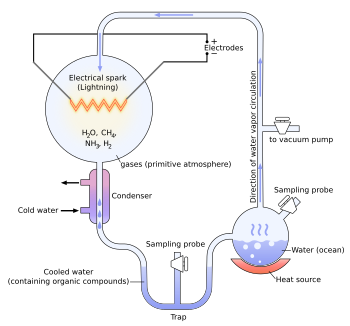However new research into a once overlooked area of cellular mechanics suggests that LUCA was actually a relatively advanced life form. Polyphosphate is a molecule which stores energy in simple cells in a fashion similar to the function of ATP in more advanced organisms. The polyphosphate is stored in a special area of the cells. The researchers, led by Dr Manfredo Seufferheld of the University of Illinois believe that this storage site represents the first known, universal organelle.
LUCA would have been a bacterium which, by definition, do not possess organelles. Yet evidence suggests that this first organelle is present in both branches of the tree of life; the complex Eukaryotes and and smaller and less complex Prokaryotes, the group which includes the bacteria. This completely trounces a well established law of biology. In 2003 Seufferheld and colleagues analysed the polyphosphate storage structures in an agrobacterium and found that they were chemically, physically and functionally the same as an energy storage organelle known as an acidocalsiome which is found in many single celled Eukaryotes.
This implies that the structure evolved before the prokaryote/eukaryote split. By studying the evolutionary history of an enzyme called a vacuolar proton pyrophosphatase or V-H+PPase for short which is present in acidocalsiomes, the team were able to trace the origin of energy storage organelles, such as polyphosphates or acidocalsiomes, back through billions of years through the tree of life, all the way to LUCA.
'There are many possible scenarios that could explain this, but the best, the most parsimonious, the most likely would be that you had already the enzyme even before diversification started on Earth,' said study co-author Gustavo Caetano-Anollés, a professor of crop sciences and an affiliate of the Institute for Genomic Biology at Illinois. The protein was there to begin with and was then inherited by all emerging lineages. 'LUCA may have been more complex than the simplest organisms alive today,' said James Whitfield, a professor of entomology at Illinois and a co-author on the study.
Scientists have argued that the reason bacteria are so simple in genetic make up and structure is because they have to live in extreme environments and reproduce extremely quickly. Yet this may be because they have become reduced versions of what they actually were. If this is the case we may have over-looked just how complex this common ancestor is.
